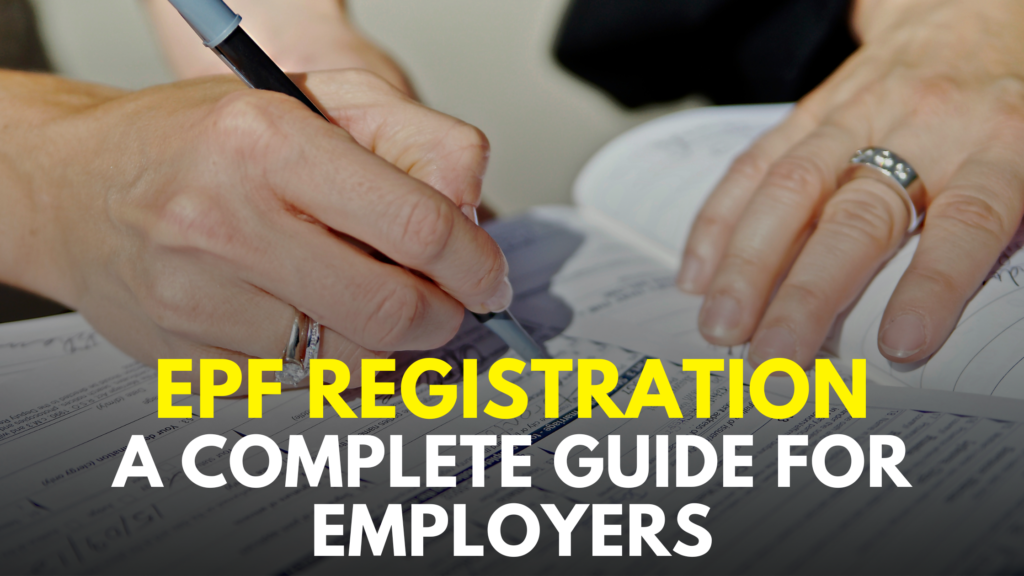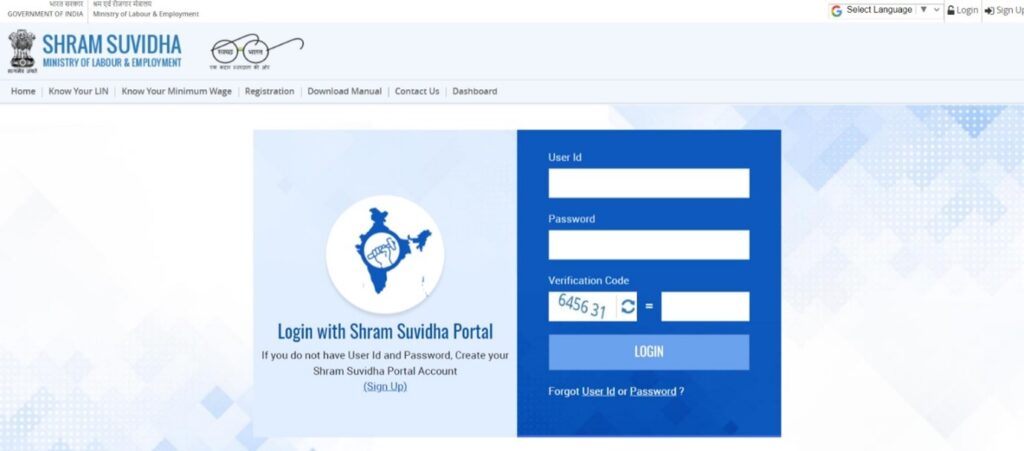
EPF Registration: A Complete Guide for Employers
Picture providing your family with a legacy of financial security, ensuring they are ready for their futures. With EPF, you’re not just saving for yourself as well as investing in their dreams too. This vision is possible with the partnership of an employer and employee and a unique law known as the “Employees’ Provident Funds and Miscellaneous Provisions Act, 1952” which can make this vision attainable.
The Employees’ Provident Fund (EPF) is a lifeline that offers security and stability at every point of an employee’s career, making it more than merely a retirement savings plan. As we are going to discuss in this, employers and employees will be able to confidently manage the complexities of the EPF registration, contribution and withdrawal procedures.
What is EPF and Why Is Registration Important?
A government-mandated retirement savings plan called the Employee Provident Fund (EPF) was created to give workers in the organized sector financial stability. Employers and employees both gain from the Employees’ Provident Funds and Miscellaneous Provisions Act of 1952, which established the EPF as a long-term savings option.
What Makes Registration Crucial?
EPF has its own benefits for both employer as well as employees, including;
1. Legal Compliance and Implications
- Mandatory Requirement: EPF isn’t just a box to tick—it’s a legal requirement. This registration is a mandatory step for all the organised sector entities and not complying with this has legal complications.
- Regular Audits: Registered employers may be subject to audits by the Employees’ Provident Fund Organization (EPFO) to verify compliance. This includes ensuring accurate contributions and timely payments.
- Establishment Code: Upon registration, businesses receive a unique EPF code essential for all EPF-related activities and compliance.
2. Benefits for Employee Welfare
- Retirement Savings: EPF functions as a mandatory savings plan, helping employees build a fund for retirement, which is crucial for financial security in their later years. Under Section 80C of the Income Tax Act in old tax regime, the contributions to the Employee Provident Fund (EPF) can be availed as an income deduction by the employees
- Pension and Insurance: The EPF scheme includes the Employees’ Pension Scheme (EPS), which provides monthly pensions after retirement. Additionally, it offers life insurance coverage, protecting employees’ families in the event of unexpected circumstances.
- Withdrawal and Loans: Employees can access their accumulated funds for specific needs, such as medical emergencies or purchasing a home, providing support during critical times.
- Higher Interest Rates: The EPF scheme typically offers interest rates that are more favourable than standard savings accounts, enhancing the growth of employees’ savings over time.
3. Advantages for Employers
- Tax Deductions: Employers can deduct their contributions to the EPF as business expenses under Section 36 of the Income Tax Act, which helps reduce their taxable income.
- Attractive Work Environment: Providing EPF as part of employee benefits enhances an employer’s appeal to potential hires, aiding in both recruitment and retention. This positions organisations as a responsible and trustable.
- Lower Attrition Rates: As the employees’ social security goal is fulfilled by providing EPF benefits, attrition rates can be reduced significantly. It provides a satisfaction to employees and promotes a happy workplace.
Who Needs to Register for EPF?
First, learning who needs to register for the Employee Provident Fund (EPF) is essential for employers aiming to comply with legal requirements while supporting their employees’ financial well-being.
Employers
If you run an organization with 20 or more employees, registering for EPF is not just a choice—it’s a legal obligation under the Employees’ Provident Funds and Miscellaneous Provisions Act, 1952. This regulation applies to various types of employers, including:
- Public Sector Undertakings: Government-owned corporations or entities.
- Private Companies: Any privately owned business.
- Partnerships: Firms formed by two or more partners.
- Self-Employed Individuals: Those who have hired employees to assist in their business operations.
Employees
Now, let’s talk about the employees themselves. The EPF scheme is designed to benefit a wide range of workers. The following individuals qualifies for this scheme:
- Salary Cap: Employees earning up to ₹15,000 per month are automatically eligible for EPF. However, those with a higher salary can still join the scheme by opting for voluntary registration.
- Types of Employment: The EPF covers all categories of workers, whether they are full-time, part-time, or contractual. This inclusivity ensures that a diverse workforce has access to essential financial security.

The EPF Registration Process
Necessary Documents for Registration
To complete the EPF registration, you will need the following documents:
- PAN (Permanent Account Number): The PAN of the business entity.
- Certificate of Incorporation: Proof of business registration, such as a certificate of incorporation or registration.
- Bank Account Details: A copy of the bank statement or passbook that shows the bank account used for EPF contributions.
- Details of Employees: A list of employees along with their Aadhaar numbers, PAN and bank account details.
- Address Proof: Proof of the establishment’s address, such as a rental agreement or utility bill.
Step-by-step guide to registering for EPF
Step 1: Start with the EPFO Portal
The first step is to visit the official EPFO website at epfindia.gov.in. Once on the homepage, look for the “Establishment Registration” option. Clicking on this will direct you to the next phase of the registration process.

Step 2: Get Acquainted with the User Manual
Once you’ve accessed the “Establishment Registration” section, you will be taken to the “Shram Suvidha” page. Here, you can download the User Manual. It’s essential to read this manual thoroughly; it contains important information that will guide you through the registration process.

Step 3: Set Up Your Digital Signature Certificate (DSC)
Next, you’ll need to register your Digital Signature Certificate (DSC). Start by clicking the “Sign Up” button. You’ll need to provide:
- Your Name
- Email Address
- Mobile Number
- A verification code sent to your mobile
The user manual will offer detailed instructions on how to proceed with the online employer registration. After completing this step, you’ll see an option for “Registration for EPFO-ESIC”.
Step 4: Apply for New Registration
Now it’s time to take the plunge. Move to “Apply for New Registration” and you will see:
- Employees’ State Insurance Act, 1948
- Employees’ Provident Fund and Miscellaneous Provisions Act, 1952
Select the option related to EPF and hit the “Submit” button.
Step 5: Fill in Your Establishment Details
This is a crucial step. You’ll need to provide comprehensive information about your establishment, including:
- Establishment Details: Name, Type and Address
- Contact Information: Key contacts for the establishment
- Identifiers: Such as your PAN
- Employment Details: The number of employees in your organization
- Particulars of Workers
- Branch/Division: If applicable
- Nature of Activities: The primary activities of your establishment
- Additionally, ensure that you upload any required documents as attachments.
Once you’ve filled in all the details in the tabs, click the “Submit” button to proceed.
Step 6: Complete Your DSC Registration
After submitting the registration form, you will need to apply for the Employer’s Digital Signature Certificate (DSC), which is mandatory for the EPF registration process. This step is crucial to ensure that your application is valid and secure.
Contribution Structure
- Employee and Employer Contributions: Employees contribute 12% of their basic salary to the EPF and employers match this with their own 12% contribution. Of the employer’s share, 8.33% is allocated to the Employees’ Pension Scheme (EPS) and the remaining 3.67% goes directly into the EPF.
- Salary Caps and Voluntary Contributions: If an employee earns over ₹15,000, the employer’s EPF contribution is capped at that amount, but the employee can choose to contribute more voluntarily.
Withdrawal Processes
- Eligibility for Withdrawal: Employees can withdraw EPF funds upon retirement, job changes, unemployment or emergencies like medical needs and education.
- Withdrawal Steps: Employees can apply online, fill out necessary forms and submit their requests for verification and disbursement.
- Universal Account Number (UAN): Employees must have a UAN to facilitate easy tracking of contributions and withdrawals.
- Tax Implications: Regarding tax, if your EPF account has been active for over five years, withdrawals are exempt from taxes.
Summing Up
Registering for EPF isn’t just about meeting legal requirements; it’s about investing in your employees’ financial futures. By embracing this process, you create a supportive work environment that benefits everyone involved.
So, why wait? Start your EPF registration today and take a meaningful step toward your team’s well-being!
Review Courtesy: Mr. Pramod Bhardwaj







